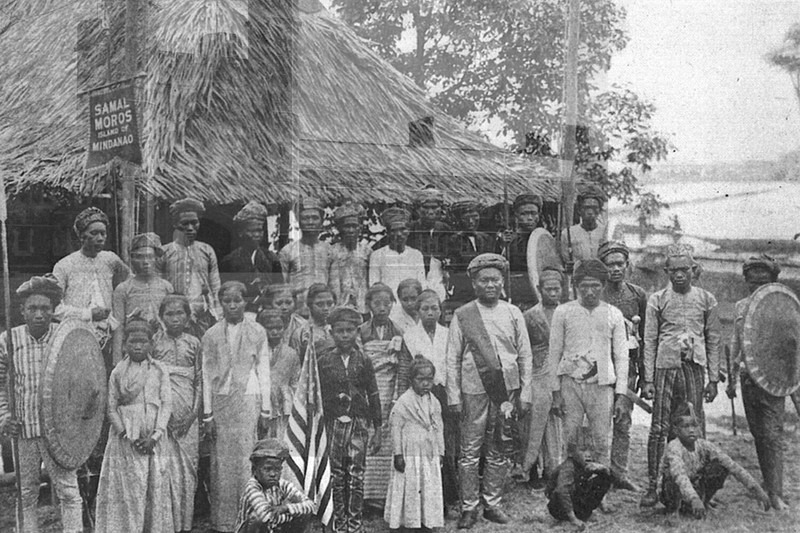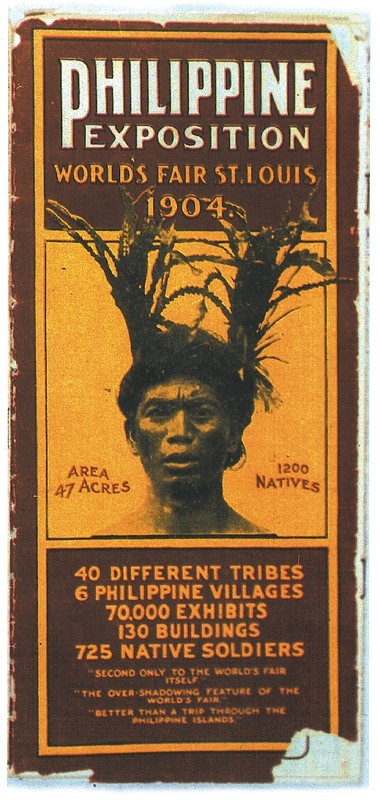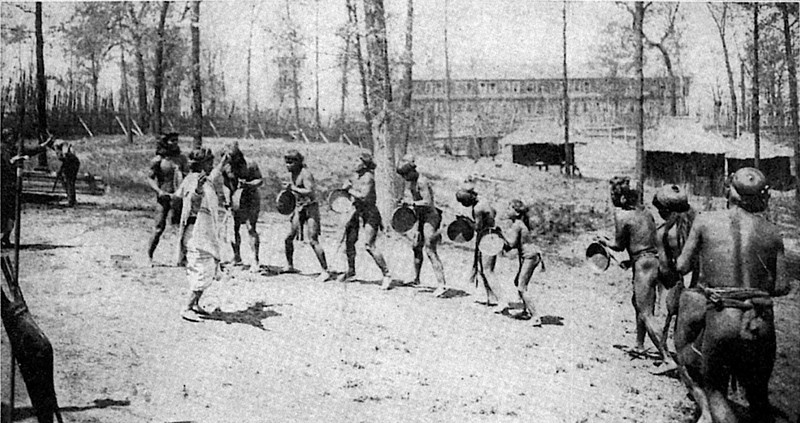The Philippine Reservation (1904)
Introduction
Text-to-speech Audio
While the 1904 World’s Fair was a grand demonstration of America's burgeoning industries and advancements in science and technology, several of the exhibits demonstrated that the prevailing attitude towards people of color in the United States and around the world was similar to previous centuries. The United States had initially fought alongside Emilio Aguinaldo and Filipino rebels in their fight for independence from Spain, but after Spain surrendered, the United States remained and colonized the islands while waging a prolonged war against Aguinaldo and others who hoped for independence. Only a few years removed from the worst of that conflict, Americans celebrated their new acquisition with the Philippine Reservation, a 47-acre exhibit at the St. Louis World's Fair. The exhibit, which was roughly centered at this point, transformed this section of the fairgrounds to represent the natural landscape of the Philippine Islands from present-day Arundel Place to Wydoyn Boulevard and University Lane to De Munb Avenue. The reservation, as it was known, housed over 1,000 Filipino people who were required to act as if indigenous life and culture were backward. In doing so, the exhibit reassured American visitors and helped justify American colonization despite the horrific civilian casualties and loss of American troops to disease during the peak of occupation. At the same time, the Filipino men and women who lived here demonstrated some degree of agency in making some aspects of the exhibit more closely resemble the history and culture of the Philippines.
Images
The Samal Moros people outside performance tent 1904

Brochure of the Philippine Exposition 1904

Indigenous dancers preforming for an audience 1904

Backstory and Context
Text-to-speech Audio
This exhibit was by far the most popular attraction at the Louisiana Purchase Expedition, with an estimated 99% of fairgoers visiting the Philippine Reservation which was located in the southwest corner of the fairgrounds. The Philippine Reservation was a “recreation” of Philippine native lands. The Anthropology Department of the fair pushed for this exhibit to celebrate the U.S. colonization of the Philippines in 1898. This exhibit was a demeaning and horrible representation of native life in the Philippines. The 47-acre exhibit housed over 1,000 Filipino people from several different ethnic groups.
One of the groups forced to reside in the Philippine Reservation was the indigenous peoples of the Cordillera Mountains. Fairgoers would watch these people and judge their way of life. This exhibit, like many others, was supposed to demonstrate the indigenous way of life as savage and in need of change. Painting indigenous people in this light helped justify American imperialism, colonization, and destruction of other lands. Mia Abeya, the granddaughter of one of the men put on display, recounted that the fair forced the Cordillera Mountain people to butcher, cook, and eat dogs every day. Abeya stated this was a deep misrepresentation of their culture. She clarified that they would only eat dogs on occasion for ceremonial purposes. This alteration of the Cordillera Mountain peoples' culture created such a deep impression on Americans, that the neighborhood near the demolished reservation is still referred to as Dogtown.
The Philippine Reservation was not the only “living exhibit” at the fair. Many of the countries represented, exploited native peoples to play parts and pose with tourists in exchange for money. The personal account of a man named Ota Benga demonstrates how people of other ethnicities were exploited for profit. Ota Benga, along with seven other men, were sold to the Anthropology Department of the fair board to represent the Mbuti people. As a child, Benga had his teeth filed into points. The department took advantage of this and put Benga on display as a cannibal. Benga and others were forced to dance and perform for white audiences during their time at the fair. At the conclusion of the fair, Ota Benga fell under the guardianship of Madison Grant, a white supremacist racial theorist. Grant had Benga locked in a cage at the Bronx Zoo as a display. Later in life, Benga worked at a tobacco factory until he committed suicide in 1916. The “living exhibits'' and reservation areas were an example of white supremacy and American imperialism that profited the Louisiana Purchase Company at the expense of others.
Sources
Cattel, Megan. “1904 World's Fair Revised: One Artist Memorializes Filipino and Indigenous People.” STLPR, 18 May 2021, https://news.stlpublicradio.org/2021-05-16/1904-worlds-fair-revised-one-artist-memorializes-filipino-and-indigenous-people.
Johnson, Walter. “The Largest Human Zoo in World History: Walter Johnson.” Lapham's Quarterly, 14 Apr. 2020, https://www.laphamsquarterly.org/roundtable/largest-human-zoo-world-history.
Mike. “1904: Down the Pike at the World's Fair.” Lafayette Square Archives, 4 Feb. 2022, https://lafayettesquarearchives.com/1904-down-the-pike-at-the-worlds-fair/.
Silva, J. L. (2013, June 7). Little Brown Brothers' st. louis blues: The Philippine Exposition, 1904 St. Louis World's fair - positively Filipino: Online magazine for Filipinos in the Diaspora. Positively Filipino | Online Magazine for Filipinos in the Diaspora. Retrieved May 7, 2022, from http://www.positivelyfilipino.com/magazine/2013/6/little-brown-brothers-st-louis-blues-the-philippine-exposition-1904-st-louis-worlds-fair
positivelyfilipino.com
positivelyfilipino.com
positivelyfilipino.com
